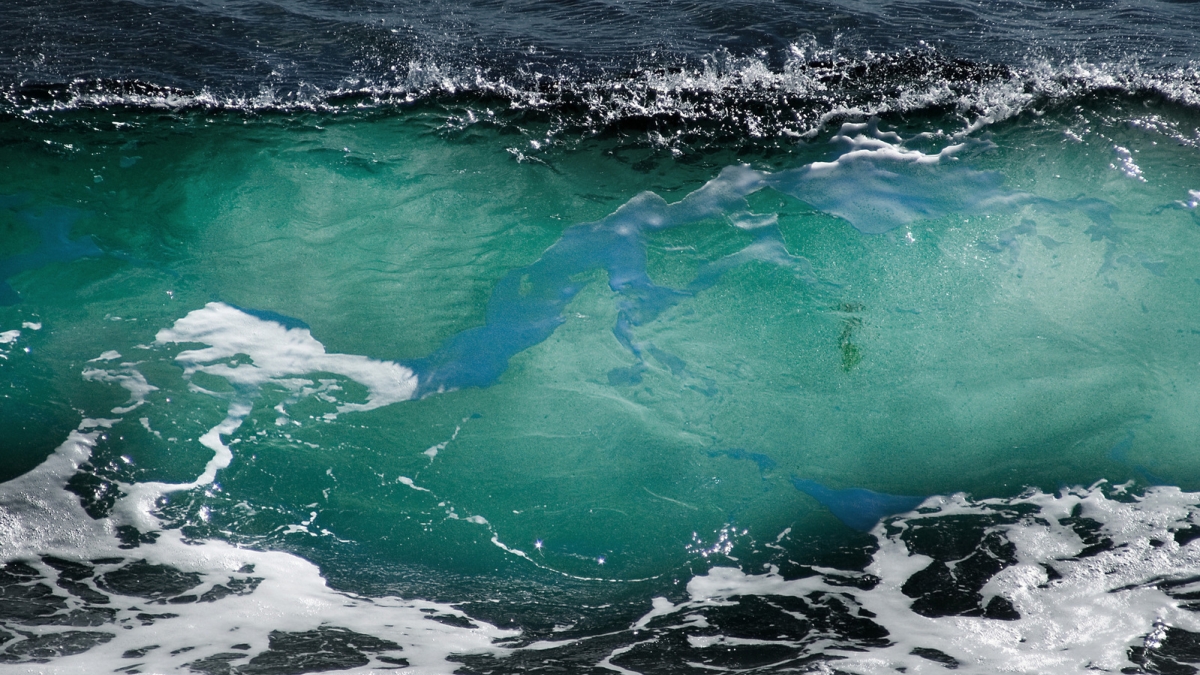It might seem hard to believe, but there recently was an ocean wave as tall as a six-story building in the north Atlantic.
The World Meteorological Organization on Tuesday classified the 2013 rise between Iceland and the British Isles as the largest wave ever monitored by an ocean buoy, measuring taller than 62 feet (19 meters).
Randy Cerveny
It’s the latest extreme record verified by the Geneva-based United Nations agency that keeps track of world’s weather, climate and water, which Arizona State University professor Randy Cerveny helps run by leading the WMO’s confirmation group and curating the events it substantiates at ASU.
Among the oddities in the archives that Cerveny maintains: a 2.25-pound hail stone that fell in Bangladesh in 1986; and 1.25 inches of rain dropping in one minute in Maryland in 1956.
Cerveny, a climatologist who teaches in the School of Geographical Sciences and Urban Planning, says it can take anywhere from a few months to a few years to verify an extreme event and that a lot can be learned from these records. He discusses his work with ASU Now:
Question: Why keep weather records?
Answer: First, by knowing what the extremes are we can gain a better idea of how our climate is changing over time.
But there are other reasons, such as engineering or medical concerns. Engineers need to know what the absolute strongest winds are, for example, in order to properly design buildings. Doctors need to know how hot an area can actually get to be better prepared for medical emergencies.
On a less serious note, I’ve been told some of this information has even helped settle some serious bar bets and bragging rights.
Q: What can these records tell us?
A: Basically, they give us a snapshot of how wild and violent our world can be. Extremes are the worst of the worst — the hottest, coldest, windiest and so on. So knowing them tells us how bad (or how good) the weather on our planet can be.
Q: Is there anything we can learn from the records to help us understand the dynamics of our planet?
A: Absolutely.
Knowing more about the absolute limits of our weather better informs us about all types of weather up to those limits.
In our recent evaluation of the longest-distance and -duration lightning flashes, we realized that we would have to literally rewrite one of our fundamental definitions of lightning.
The current professional definition, which dates back to the 1980s, states that lightning is an event that “lasts less than a second.” But with improved technology, we now know that lightning, in rare circumstances, can actually last many seconds.
Our investigation of lightning extremes helped to confirm that fact.
Q: From your perspective, what is among the most interesting records?
A: Probably the most interesting has been the world’s hottest temperature, as there has been a huge amount of interest in that record, and it has been cited in most encyclopedias and textbooks for more than a century. The current record for hottest temperature is 134 F, recorded on July 10, 1913, in Furnace Creek, Death Valley, California.
It also has been a very contentious record, with vocal supporters and critics around the globe.
Interestingly, our initial investigation in 2012 of what was then the record involved a life-threatening situation. Indeed, when we first discounted the original hottest temperature of 136 F back in 1922 Libya, one of our members, a Libyan meteorologist, was actually in Tripoli as the revolution in 2011 occurred. He managed to escape to the rebel side with his family while, he said, gunfire was occurring around them.
Q: What is among the most offbeat records?
A: Probably our recent determination of the longest-distance and longest-duration lightning flashes (199.5 miles in Oklahoma and 7.74 seconds in southern France, respectively).
The high-quality engineering work to determine those records is really quite impressive.
Everybody probably has experienced the static on the radio when lightning occurs. We used that idea of radio waves to accurately position exactly where and when a lightning flash starts and stops, employing a large network of very sensitive and complex radio sensors over an area.
It was a clever use of existing technology to gain clarity of a natural phenomenon.
Q: Why are we fascinated by weather extremes?
A: I think that our culture has always tended to promote the biggest, the highest, the strongest, etc., and that interest has led to great interest in the extremes of weather.
Books from organizations such as the "Guinness Book of World Records" have always captured the interest of the public.
Having been fascinated by those type of books as I was growing up, I find it interesting — and a bit humbling — to now be one of the group of experts that Guinness now calls to verify its own weather records.
Q: Will we see more records fall in the future?
A: Absolutely. Our climate has changed, is changing and will continue to change, and as part of that, the extremes of climate also will continue to change.
With the creation of the WMO’s Archive of Weather and Climate Extremes under the authority of the United Nations (and hosted through Arizona State University), we will continue to officially monitor and verify those extremes.
Top photo by Ove Tøpfer/Freeimages.com
More Environment and sustainability

A world full of plastic ... not fantastic
Editor’s note: This is the seventh story in a series exploring how ASU is changing the way the world solves problems.When Timothy Long’s kids were growing up, he never let them toss…

Team wins $10M XPRIZE Rainforest competition for novel solution
Several Arizona State University experts are on a team that created a new way to put a price on the rainforest in order to save it, and on Friday they won the top award in the prestigious $10 million…

ASU President Michael Crow named to TIME100 Climate list
Arizona State University President Michael Crow has been named to the 2024 TIME100 Climate list of leaders and innovators driving real climate action.The list includes leaders across a range of…

